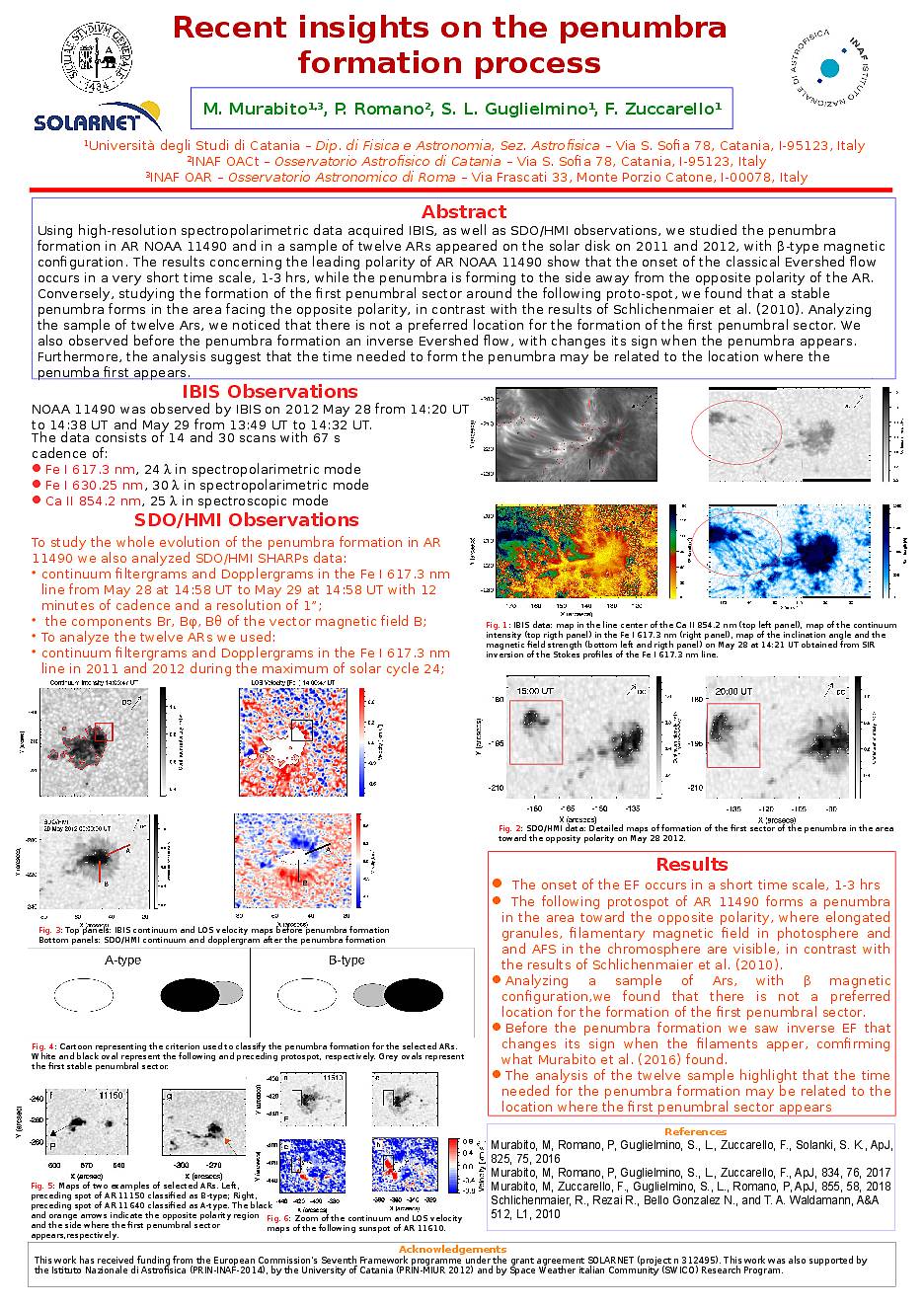Affiliation
INAF-OAR osservatorio astronomico di Roma
Main category
Natural Sciences (Astrophysics and Astrononmy)
Abstract
Using high-resolution spectropolarimetric data acquired by IBIS, as well as SDO/HMI observations, we studied the penumbra formation in AR NOAA 11490 and in a sample of twelve ARs appeared on the solar disk on 2011 and 2012, with the β-type magnetic field configuration.
The results concerning the leading polarity of AR NOAA 11490 show that the onset of the classical Evershed flow occurs in a very short time scale, 1-3 hours, while the penumbra is forming to the side away from the opposite polarity of the AR. Conversely, studying the formation of the first penumbral sector around the following proto-spot, we found that a stable penumbra forms in the area facing the opposite polarity, which appears to be located below an AFS, i.e. in a flux emergence region, in contrast with the results of Schlichenmaier et al. (2010).
Analyzing the sample of twelve ARs, we noticed that there is not a preferred location for the formation of the first penumbral sector. We also observed before the penumbra formation an inverse Evershed flow, which changes its sign when the penumbra appears. This confirms the observational evidence that the appearance of the penumbral filaments is correlated with the transition from the inverse Evershed to the classical Evershed flow. Furthermore, the analysis suggests that the time needed to form the penumbra may be related to the location where the penumbra first appears.
New high-resolution observations, like those provided by the European Solar Telescope, are expected to increase our understanding of the penumbra formation process.
Do you have problems viewing the pdf-file? Download poster
here
If the poster contains inappropriate content, please
report the poster. You will be redirected to the landing page.
